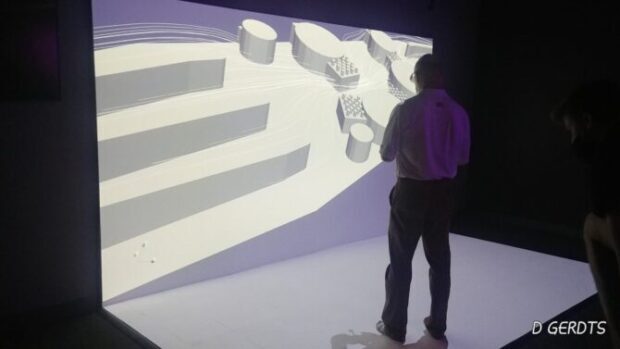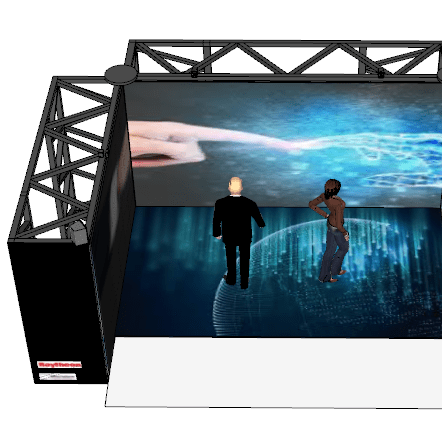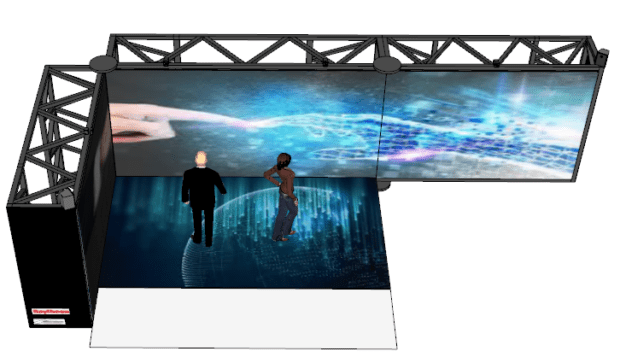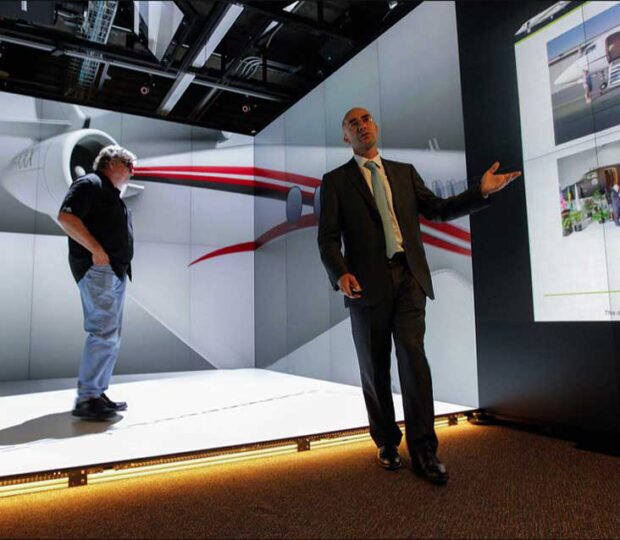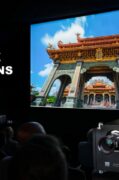A room-scale Mechdyne CAVE (Cave Automatic Virtual Environment) provides a fully immersive extended reality experience that is more than a big, immersive desktop. A true sense of scale and depth will deliver new insights, faster, when reviewing spatially complex 3D data.
While head-mounted XR devices have a place in digital workflow, they can quickly create a sense of isolation and disorientation. CAVEs enable natural, collaborative work sessions for longer periods of time, speeding the path to insight and informed decision-making. Recognizing the value of both technologies, XR headsets can be connected to a CAVE using Mechdyne’s getReal3D for real-time collaboration sessions, whether in the same room, a different building, or a different country.
Direct-view LED and projection options are available for any CAVE configuration. Through our almost 30 year history, we have designed and built every CAVE configuration, even developing some new ones.






